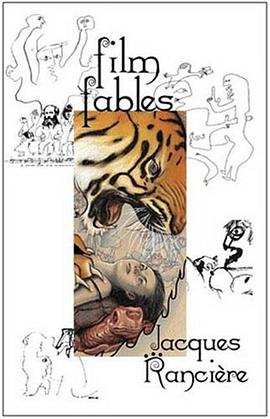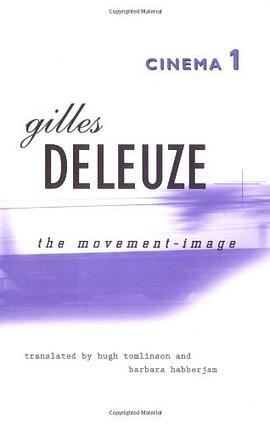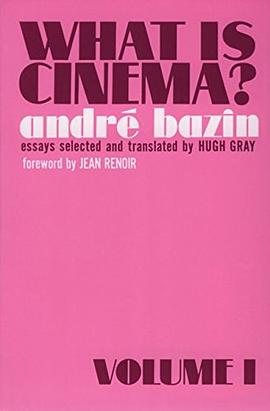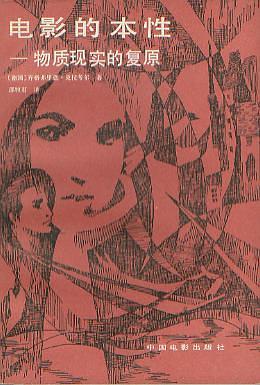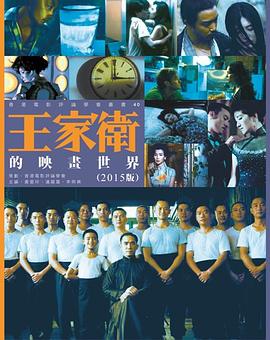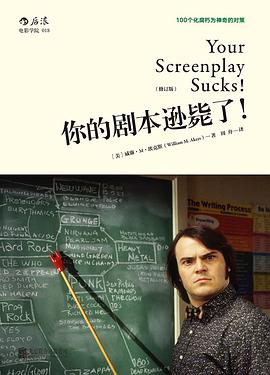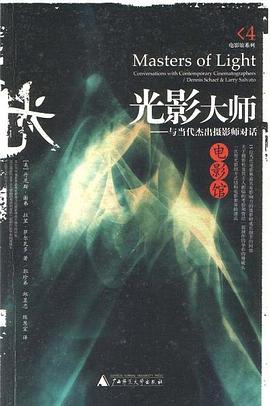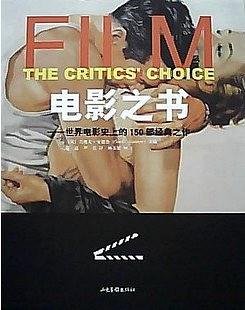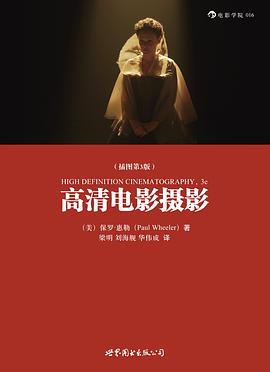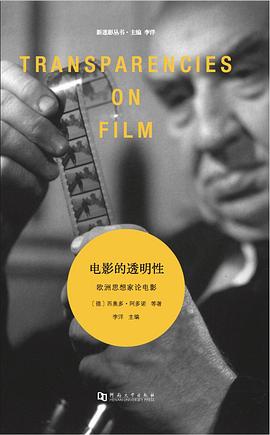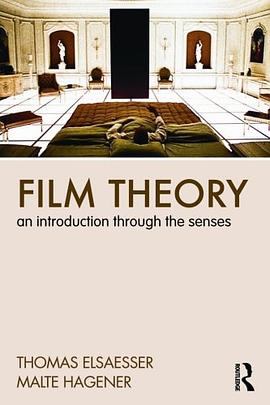
Film Theory pdf epub mobi txt 电子书 下载 2025
- 电影理论
- 电影
- Thomas_Elsaesser
- 电影研究
- visualculture
- 電影
- 英文
- 英国
- 电影理论
- 影像分析
- 叙事结构
- 视觉语言
- 导演手法
- 镜头运用
- 电影史
- 美学原理
- 文化批判
- 类型电影

具体描述
What is the relationship between cinema and spectator? That is the central question for film theory, and renowned film scholars Thomas Elsaesser and Malte Hagener use this question to guide students through all of the major film theories—from the classical period to today—in this insightful, engaging book. Every kind of cinema (and film theory) imagines an ideal spectator, and then imagines a certain relationship between the mind and body of that spectator and the screen. Using seven distinctive configurations of spectator and screen that move progressively from ‘exterior’ to ‘interior’ relationships, the authors retrace the most important stages of film theory from 1945 to the present, from neo-realist and modernist theories to psychoanalytic, ‘apparatus’, phenomenological and cognitivist theories.
作者简介
Thomas Elsaesser is Professor of Film and Television Studies in the Department of Art and Culture at the University of Amsterdam. A renowned film scholar, he is the author and editor of many books, including Weimar Cinema and After, also published by Routledge.
Malte Hagener is Associate Professor of media studies at the Leuphana Universität Lüneburg. He has written Moving Forward, Looking Back: The European Avant-garde and the Invention of Film Culture, 1919-1939 and edited many volumes, including Cinephilia: Movies, Love, and Memory.
目录信息
1. Cinema as window and frame REAR WINDOW -- Constructivism -- Realism -- Open and closed film forms (Leo Braudy) -- Classical cinema -- Central perspective -- Rudolf Arnheim -- Sergej Eisenstein -- Andre Bazin -- David Bordwell -- Cinema as shop- window and display
2. Cinema as door -- screen and threshold THE SEARCHERS -- Entry into the film -- Etymology of screen -- Thresholds of the cinema/movie theater -- Beginnings: credits and credit sequences -- Neoformalism (Bordwell/Thompson) -- Post- structuralism (Thierry Kuntzel) -- Michail Bachtin -- Door/screen as filmic motif in Buster Keaton and Woody Allen
3. Cinema as mirror and face PERSONA-- Bela Balazs -- The close- up -- The face -- Face as mirror of the unconscious -- Christian Metz -- Jean- Louis Baudry -- Apparatus- theory -- Early cinema and the close- up (Tom Gunning) -- Reflexive doubling in modern (art) cinema -- Mirror neurons -- Paradoxes of the mirror
4. Cinema as eye -- look and gaze BLADE RUNNER -- Active and passive eye -- The mobile eye of early cinema -- Dziga Vertov -- Apparatus- theory -- Suture -- Continuity- editing -- Laura Mulvey -- Feminist film theories -- THE SILENCE OF THE LAMBS -- Historicity of modes of perception -- Regimes of the gaze -- The big Other (Jacques Lacan) -- Slavoj A iA ek -- The panoptic gaze (Michel Foucault) -- Niklas Luhmann and selfmonitoring
5. Cinema as skin and touch CRASH -- Critique of "ocularcentrism" -- Skin and identity -- THE NEW WORLD-- Vivian Sobchack -- Phenomenology -- The (re-)turn to the body --Avant- garde practices -- Body and genre (Linda Williams, Barbara Creed) --The skin of film (Laura Marks) -- Accented cinema (Hamid Naficy) --Siegfried Kracauer
6. Cinema as ear -- acoustics and space SINGIN' IN THE RAIN -- Sound as spatial phenomenon -- Silent cinema and the introduction of sound -- Sound in classical cinema ---- The acousmetre (Michel Chion) -- Reversals in the hierarchy of image and sound -- Surround- systems -- Materiality and plasticity of sound
7. Cinema as brain -- mind and body ETERNAL SUNSHINE OF THE SPOTLESS MIND-- Propaganda and cult films -- Five concepts for connecting mind and cinema -- Gilles Deleuze -- Annette Michelson -- Torben Grodal -- Mind- game films -- Mind and body, spectator and film -- Cognitivism -- Phenomenology -- Empathy -- Embodiment and disembodied vision Conclusion: digital cinema -- the body and the senses refigured? TOY STORY -- Animation and (photo-)graphics -- The future of projection -- Screens: bigger and smaller -- The new body norm: face or hand? -- Productive contradictions: digital cinema, virtual reality, media convergence -- Interface and portal instead of window, door and screen -- MONSTERS INC. and doors -- Public and private -- Mobility and hybridity -- Film theory and philosophy: radical reformulations or rescue missions?
· · · · · · (收起)
读后感
评分
评分
评分
评分
用户评价
"the body"
评分特难懂且片例牵强附会
评分以前也用过Elsaesser的其他文章,不过这本读起来特别晦涩,不好理解,觉得简单易懂的童鞋可以留个联系方式,讨论下cinema as window and frame这一章
评分这可能是我翻看最多遍的电影理论导读,尤其在越来越了解整个电影学的脉络之后。从sense出发,本身就是作者对于“电影是什么”这个永恒的本体论问题的回答。缺点在于对初学者不算友好,但对电影学整体图景有一定了解后,并有志于研究电影与意识、感官,这会是非常好的入门读物。
评分不大可信 只有参考文献有用 1电影例子似乎只是呈现每一章的隐喻而无助于理解理论2将特定理论硬塞到某种对电影的隐喻里给人一种好像大家各自都分好了工的错觉 非常容易让人误解这些理论的缘起与其问题意识 让人以为这些理论都是重视一点忽视其他(事实根本不是)作者的分类学取代了具体的理论问题
相关图书
本站所有内容均为互联网搜索引擎提供的公开搜索信息,本站不存储任何数据与内容,任何内容与数据均与本站无关,如有需要请联系相关搜索引擎包括但不限于百度,google,bing,sogou 等
© 2025 book.quotespace.org All Rights Reserved. 小美书屋 版权所有

